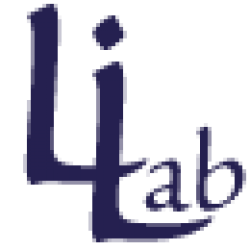
Our lab, led by Associate Professor Camilo Libedinsky, is part of the Department of Psychology of the National University of Singapore and is located in the N.1 Institute for Health (N.1).
The broad motivation behind my work is to understand the computational principles that underlie cognitive operations. General intelligence (GI) is a term used to describe a specific set of abilities possessed by a physical system, which include the ability to reason, use strategies to solve tasks, represent commonsense knowledge, plan actions, learn efficiently, and integrate all these skills towards achieving goals. The only systems known to possess GI are animals with large brains, including birds and mammals. Cognitive neuroscience has provided important information about the cognitive building blocks of GI, how they interact, and how they are implemented in the brain. However, we still lack a computational understanding of GI. This lack of understanding is reflected in our inability to replicate GI in man-made systems, including state-of-the-art artificial intelligence (AI) systems.
Underlying the abilities that constitute GI are a few critical cognitive building blocks. One such building block is working memory, which is the ability to maintain information “online” for processing and to drive future action; this function is essential to most forms of intelligent behavior. In primates (including humans), the lateral prefrontal cortex (LPFC) plays an essential role in maintaining working memory information. My work in this field addresses the following questions: (1) What is the neural mechanism that allows the maintenance of working memory information in the LPFC? (2) How is working memory information conveyed to regions that receive input from the LPFC? (3) How is working memory information manipulated? (4) Can we use our understanding of working memory encoding and manipulation to build AI systems that “think” like animals? This line of work has consequences for the study of normal cognition, abnormal cognition, and artificial cognition.
Relevant Publications
(Including work under submission or to be submitted soon. For a full list, visit here)
____________________ Under Preparation _______________________________
- Tao, W. and Libedinsky, C.
 . Evidence of Activity-Silent Working Memory in Macaque Prefrontal Cortex. (under preparation)
. Evidence of Activity-Silent Working Memory in Macaque Prefrontal Cortex. (under preparation) - Herikstad, R. and Libedinsky, C.
 . The dual-threshold model of movement initiation. (under preparation)
. The dual-threshold model of movement initiation. (under preparation)
____________________ Under Review ____________________________________
- (2025) Qian, Y., Herikstad, R. and Libedinsky, C.
 . Inferring task strategy from the representational geometry of prefrontal cortex. (under preparation, to be submitted in December 2024)
. Inferring task strategy from the representational geometry of prefrontal cortex. (under preparation, to be submitted in December 2024) - (2024) Kumar, M.G., Tan, C., Libedinsky, C., Yen, S.C. and Tan, A.Y.Y., 2021. One-shot learning of paired association navigation with biologically plausible schemas. (under review at the Journal of Neuroscience)
____________________ Published ____________________________________
- (2025) Sigalas, E. and Libedinsky, C.
 . Mixed recurrent connectivity architecture in primate prefrontal cortex. bioRxiv, pp.2024-06. (PLOS Computational Biology)
. Mixed recurrent connectivity architecture in primate prefrontal cortex. bioRxiv, pp.2024-06. (PLOS Computational Biology) - (2024) Qian, Y., Herikstad, R. and Libedinsky, C.
 . Working memory updating in the macaque lateral prefrontal cortex. (Journal of Neuroscience)
. Working memory updating in the macaque lateral prefrontal cortex. (Journal of Neuroscience) - (2023) Libedinsky, C.
 . Comparing representations and computations in single neurons versus neural networks. Trends in Cognitive Sciences. Vol. 27, Issue 6, p517-527
. Comparing representations and computations in single neurons versus neural networks. Trends in Cognitive Sciences. Vol. 27, Issue 6, p517-527 - (2019) Parthasarathy, A., Cheng T., Herikstad R., Loong F.C., Yen, S.C.
 , Libedinsky, C.
, Libedinsky, C. . Time-Invariant Working Memory Representations in the Presence of Code-Morphing in the Lateral Prefrontal Cortex. Nature Communications, 10, 4995
. Time-Invariant Working Memory Representations in the Presence of Code-Morphing in the Lateral Prefrontal Cortex. Nature Communications, 10, 4995 - (2017) Parthasarathy, A., Herikstad, R., Bong, J. H., Medina, F. S., Libedinsky, C.
 , & Yen, S. C.
, & Yen, S. C. . Mixed selectivity morphs population codes in prefrontal cortex. Nature Neuroscience, 1-10. (full text + suppl.)
. Mixed selectivity morphs population codes in prefrontal cortex. Nature Neuroscience, 1-10. (full text + suppl.)


